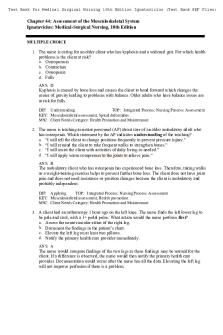Bowlby 44 thieves - Lecture notes 1 PDF

| Title | Bowlby 44 thieves - Lecture notes 1 |
|---|---|
| Author | Amelia Hallsworth |
| Course | Social Policy in Community Practice |
| Institution | University of Central Lancashire |
| Pages | 1 |
| File Size | 44.7 KB |
| File Type | |
| Total Downloads | 103 |
| Total Views | 154 |
Summary
Lecture notes on Bowlby's 44 thieves, from burnley campus, Amy's lecture...
Description
Amelia Hallsworth
“Discuss the ethical issues and social implications that arise from Bowlby’s (1944) research ‘Forty-four juvenile thieves: their characters and home-life.’ [12]
Bowlby’s research which was carried out in 1944 had many ethical issues and social implications attached to it. The ethical issues caused by John Bowlby’s research were confidentiality and privacy and valid consent. Confidentiality and privacy was an ethical issue because Bowlby publishes his report in 1946 and included the first name and initial letter of last name of each participant in the study. The case study also included a lot of personal and background information about the participant, the main fact being that they were a thief. The amount of information about participants in the case study made it very easy for somebody to research the case study and work out who the participants were. This could result in people learning a lot of information about the participants knowing or agreeing to it. Some of the participants may have preferred that their information wasn’t shared in a way that was easy for the public to work out who they were. It’s also an ethical issue because it isn’t made clear whether the participants or their families knew that this information was being collected. Valid consent was also an ethical issue; this is because it appears that the data was collected as part of routine meetings and check up’s at the clinic and therefore the participants and their families may not have known that the data was being collected and therefore probably didn’t consent to it. It’s also an issue because the report was published 5 years later in 1946 so it would have been difficult to gain consent from the participants or their families when it was published. The participants in the study may have changed in the time between the data collection and the report publication and they may not have wanted that information publishing about them five years later. The social implications associated with Bowlby’s research are maternity leave. The tradition has always been that after a child had been born their mother would have up to 6 months off work as maternity leave and the father would remain in work. The government then changed the rules so that a mother and father are entitled to share that six month period as they see fit. This is called Paternity leave. Paternity leave allows a mother and a father to have up to three months off work each after the birth of their child. This change shows that as a society we are moving away from the traditional views that a mother is the primary care-giver of an infant and it also allows the father to build a bind with their child rather than just a mother doing so....
Similar Free PDFs

Module 44 - Lecture notes 44
- 3 Pages

GRE Plan - Lecture notes 44
- 3 Pages

Chapter 44 notes
- 5 Pages

Bowlby - 304 words
- 1 Pages

Bicycles Thieves Essay
- 3 Pages

Lecture notes, lecture 1
- 9 Pages

Lecture notes, lecture 1
- 4 Pages

Lecture-1-notes - lecture
- 1 Pages

Lecture notes- Lecture 1
- 20 Pages

Bronfenbrenner Vigotsky y Bowlby
- 2 Pages

Lecture notes, lecture 1
- 4 Pages

Lecture-1 - Lecture notes 1
- 6 Pages

Lecture notes, lecture 1
- 9 Pages
Popular Institutions
- Tinajero National High School - Annex
- Politeknik Caltex Riau
- Yokohama City University
- SGT University
- University of Al-Qadisiyah
- Divine Word College of Vigan
- Techniek College Rotterdam
- Universidade de Santiago
- Universiti Teknologi MARA Cawangan Johor Kampus Pasir Gudang
- Poltekkes Kemenkes Yogyakarta
- Baguio City National High School
- Colegio san marcos
- preparatoria uno
- Centro de Bachillerato Tecnológico Industrial y de Servicios No. 107
- Dalian Maritime University
- Quang Trung Secondary School
- Colegio Tecnológico en Informática
- Corporación Regional de Educación Superior
- Grupo CEDVA
- Dar Al Uloom University
- Centro de Estudios Preuniversitarios de la Universidad Nacional de Ingeniería
- 上智大学
- Aakash International School, Nuna Majara
- San Felipe Neri Catholic School
- Kang Chiao International School - New Taipei City
- Misamis Occidental National High School
- Institución Educativa Escuela Normal Juan Ladrilleros
- Kolehiyo ng Pantukan
- Batanes State College
- Instituto Continental
- Sekolah Menengah Kejuruan Kesehatan Kaltara (Tarakan)
- Colegio de La Inmaculada Concepcion - Cebu


